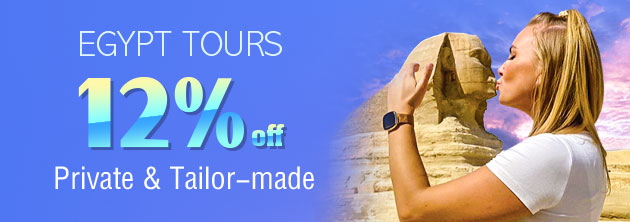7 Egypt History Facts That Makes It Fascinating
Talking about the history facts of Egypt, the first thing that comes to our mind is the pyramids. Egypt history facts can be closely related to the iconic and fascinating information that are beyond just the bandaged mummies, golden treasures, and the debate over King Tutankhamun’s murder. Let us dig deep into some of the history facts that make Egypt stand out as an out of the ordinary place to visit.1. You thought Cleopatra was from Egypt? Think again
What name comes to your mind when talking about famous persons of ancient Egypt? Did you say King Tut and Cleopatra? Okay, we do accept the first one, we instantly rule out Cleopatra in the said list. Cleo was born in Alexandria, and was a part of the long line of Greek Macedonians. The line originally descended from Ptolemy I (among the most trusted lieutenants of Alexander the Great). This Ptolemy Dynasty ruled from 323 to 30 BC, and the leaders are predominantly Greek in culture and sensibilities. Cleopatra was one of the first members of the Ptolemaic Dynasty who could speak the Egyptian language.Fascinating, isn’t that? See also Language in Egypt
2. Who made the history's earliest peace treaties? Any guesses?
The Kadesh Peace Treaty, considered as the earliest peace treaties in history was produced by ancient Egypt. The treaty was negotiated with the Hittite Empire in 1259 B.C. It was much later in 1970 that the Turkey government passed a copy to the United Nations, and now, it can be seen at the entrance of the Security Council chambers.So, the next time you check the treaty out at the Security Council chambers entrance, you would know you are going right with your Egypt history facts.
Read More: Amazing Egyptian Facts Including Ancient Egyptian History
3. Camels? Really? In Egypt? Are you sure?
You thought camels were a regular ride in Egypt? You need to crosscheck your Egypt history facts. The reality is that camels were not used in Egypt till the end of dynastic age. Then what the regular ride? It was donkeys that ancient Egyptians used as beasts of burden, along with boats for a better and more convenient means of transport in the famous River Nile which flowed amid the center of the fertile land of Egypt creating a natural highway and a sewer as well. See also Camel Ride in Egypt
|
|
|
4. Egypt is NOT all about mummies! Period!
Bandaged mummies are so synonymous with the idea of Egypt history facts that the truth is often ignored. And what’s the truth, did you ask? The fact is the eviscerated, dried and bandaged corpse must not really define Egyptian artefact as not everyone was mummified to be true. Rather, saying “not everyone could afford to be mummified” makes more sense. Mummification used to be a costly affair that included several processes roughly including drying, embalming, and wrapping with a bandage. At the same time, not all could practice the mummification the right way.Additionally, the practice was confined to the elite class who eventually believed that life after death was possible if the body can be retained a recognisable human form. The particular royal class wanted to be buried in coffins within tombs, but the corpse would start to rot. As a solution, the science and process of artificial mummification came into practice as an elaborate burial equipment.
So, in short, all of Egypt is not confined under bandaged corpse.
Read More: Egypt Facts for Kids from Historians
5. Not everything used to be written in hieroglyphs for obvious reasons
Beautiful to look at, difficult to read – that’s how hieroglyphs can be defined in a line. A script that consisted of hundreds of intricate images can be anything but easy to “write” and “read”. Needless to say, it was much time consuming too. Hence, hieroglyph was limited to writing only the most important texts. Say, for scribbles on tomb and temple walls, or for recorded texts exclusively for royal achievements.However, with the daily business demands, Egypt’s scribes toned down to hieratic which was a simplified and shorthand version of the complicated hieroglyphic writing. That eventually landed to demotic towards the end of the dynastic period, and no wonder it was even simpler. All the three scripts were anyway descending from the ancient Egyptian language. Yet another one from the bunch of Egypt history facts, what say?
6. Who ruled Egypt – a king or a queen?
As mythologies and legends go, generally the son of the kind inherited the throne and crown as tradition. Ideally so, the kind of Egypt had to be the son of the previous king, right? Not right sadly! Learn your Egypt history facts straight that the practice was not always possible in Egypt. In fact, the coronation ceremony was for the most likely candidate to be the unassailable king no matter if he is a prince, princess, or any unlikely individual.

Temple of Queen Hatshepsut
|
History proves that in at least three occasions, women took over the throne as female kings and used the full king’s titulary. Facts confirm that Hatshepsut, the most successful of them, ruled over Egypt for more than 20 years. The other two famous female kings were Sobeknefru and Tausret crowned for right reasons.
7. The boy king – Tutankhamun
You were waiting for this, weren’t you? King Tutankhamun remains as the most interesting of Egypt history facts as everything from his life, to his parents, to his death, and the small tomb seem to be interesting and fascinating. King Tut was crowned at the age of 8 or 9, and sadly he died when he was 18 years old around 1324 B.C. His body was mummified, only to be found and known to the world in the year 1922. Thanks to the British archaeologist Howard Carter for chiselling through a doorway and accidentally entering the boy pharaoh’s tomb, which was apparently sealed for more than 3,200 years. It was fascinating to find 5,000 priceless treasures including artefacts and gold, which were intentionally kept in the tomb to accompany the king into the afterlife.Genetic testing confirmed that he was the grandson of the great pharaoh Amenhotep III, and the son of Akhenaten. CT scan and DNA results confirmed that Tut had an infected broken left leg, and multiple malaria infections. However, there was an injury at the back of his skull which doesn’t rule out the fact that he could have been possibly assassinated!
Read More: Fun Facts about Egypt before Planning Your Trip
You may explore more Egyptian history and arts in Coptic Museum.


